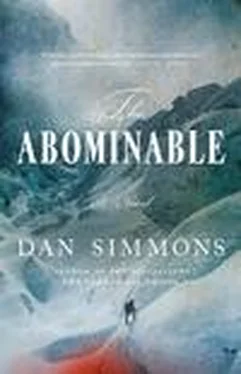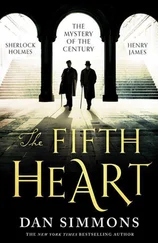Still, the clothing and materials we were buying now were very similar—with a few wonderful modern improvements—to what Scott and his men had worn to their cold deaths in the Antarctic.
The first item on the sacred List was windproof clothing, and for that, the List said, we should “Seek out Messrs. Burberry, Haymarket (‘ask for Mr. Pink’).” Jean-Claude and I were a little intimidated by what was reputed to be one of the ritziest of all London haberdashers—“outfitters to Ernest Shackleton” and all that. So J.C. and I went together on a day when the Deacon was busy with other expedition preparation business.
“Mr. Pink,” it turned out, was indisposed and not at the Messrs. Burberry establishment on Haymarket that particular day, but a formally dressed and impeccably polite “Mr. White” spent nearly three hours helping us choose clothing and sizes before we left with a receipt for our purchases and a promise that they would be delivered to our hotel that very afternoon. It turned out that the parcels beat us back to the hotel, and we’d only stopped for a single post-Burberry pint on the way.
The majority of what we purchased at Messrs. Burberry was in the Shackleton line of windproof knickerbockers, smocks, and gloves. We purchased fingerless woolen mitts that went inside larger mitts made of Shackleton gabardine. We added thick woolen mufflers to our Burberry-buying list.
We also needed protection for our heads and faces at Everest altitudes—or even at the 17,000-foot and higher altitudes of the many passes on the 350-mile hike through Tibet to the mountain—and, rather amazingly I thought, Messrs. Burberry sold leather flying, or perhaps motorcycle, helmets with rabbit or fox fur linings and earflaps that tied under one’s chin. Also available—and we each bought one—were face masks made of a thin, soft, breathable, leather-lined chamois. This awe-inspiring combination of leather flaps and straps and fur and brass toggles was topped off with massive goggles made of Crooke’s glass which could be sewn into the leather face mask and helmet if we so chose. The thick glass darkened our view and would shield our eyes from the terrible sunlight at high altitudes. Every climber knew the story of Edward Norton, who’d left his goggles off during his and Somervell’s daring 1922 traverse across the North Face and their failed attempt to climb up the snow-filled great gully that runs down the face of the mountain from the summit. The climbing was so technical that Norton removed his goggles for hours to make sure he could see where he was setting his hands and feet. He’d assumed that since he was climbing on bare rock more than on reflective snow or ice, the sunlight wouldn’t hurt his eyes.
They didn’t succeed in climbing the treacherous couloir, but that night upon descending to Camp IV, Norton was hit with blinding pain in both eyes. He’d given himself ophthalmia—snow blindness with an accompanying infection—and the pain and blindness afflicted him for sixty straight hours after that. They had to help the blinded man down to Advanced Base Camp and put him in a tent covered with sleeping bags to hold out the painful light. Norton’s suffering in that tent was said to have been terrible.
The Shackleton jackets—they were waxed-cotton anoraks, really—had helped keep the wool clothing from earlier expeditions from getting soaked through, but they did very little to hold in warmth, despite their theoretical resistance to wind. The Deacon had this wild idea that a climber—at least the three of us climbers—might be able to survive in the open after dark on Everest with the combination of Finch’s goose down jackets and our waterproof Shackleton jackets. Perhaps—not probably, but just perhaps—we would have clothing warm enough to keep us alive all night in an open bivouac above 25,000 feet.
The few layers that Irvine and Mallory had been wearing when they disappeared, said the Deacon, wouldn’t keep them alive for an hour of sitting still after sunset on the North East Ridge. “I can’t guarantee that Mr. Finch’s eiderdown coats will make the difference between life and death up there,” the Deacon had said when we’d been deciding on outerwear (actually, when he had been deciding), “but I know Finch was warmer than all the rest of us in ’twenty-two, plus the eiderdown is lighter than more layers of wool, and the Shackleton overjackets should keep the down loft dry, so it’s worth the wager.”
I never liked the word “wager” used when it applied to our lives on the highest mountain on earth.
The day after our visit to Messrs. Burberry, Jean-Claude and I joined the Deacon on a boot-purchasing trip to Fagg Bros. on Jermyn Street. There all three of us were fitted for a recently designed—for polar exploration, of course—leather-soled felt boot that was intentionally made oversized to accommodate at least three pairs of thick wool socks. Few of the 1924 climbers had chosen to wear the felt boots once they were above the lower glacier, which meant that no one knew for sure how the boots performed for rock and ice climbing at real altitude.
“Why can’t I use my own climbing boots?” asked Jean-Claude. “They have served me well for years. They only need re-soling from time to time.”
“All of us in the first two expeditions, even Finch, and all of the high-climbers on last year’s expedition, wore our own hobnailed boots,” said the Deacon. “And we all suffered from cold feet, several had frostbite, and some lost toes. Sandy Irvine told John Noel last year that the reason is that these specialized alpine climbing boots not only have the hobnails—in whatever pattern you choose, and Mallory and everyone chose different ones—but also have little metal plates driven between the inner and outer soles to give extra grip. And some of the ‘nails’ on the hobnails are serrated.”
“So?” I said, impatient at last with our team leader. “ Did these expensive hobnailed boots give better grip? If so, the metal plates are a good idea, right? They can’t weigh that much.”
The Deacon shook his head in that way that always meant No, you don’t understand.
“Irvine did suggest we use fewer hobnails, for lightness’s sake,” he said. “In the army, we were told that every pound of weight on our feet was equal to ten on our back. Our leather boots during the War were substantial, but designed to be light—for maximum marching. But it’s not the weight that Sandy Irvine was warning Noel about, it was the transmission of cold.”
“Transmission of cold?” repeated Jean-Claude as if not sure of the English phrase.
“Leather soles and thick socks insulate against the terrible cold of the rock and ice high on the mountain to some extent,” said the Deacon. “But Irvine had a theory that the hobnailed boots everyone was wearing were conducting heat from the body through the feet via those metal plates and the hobnails themselves. Heat always flows to cold, of course, and that, according to Irvine’s theory, is why there were so many cases of near-frostbitten toes and some of the real thing. On our expedition, Henry Morshead had to have a toe and several fingertips amputated when we got back to India. He applied to the nineteen twenty-four expedition, but was turned down because of those injuries. So I agree with Sandy Irvine that the hobnailed boots lose body heat to the rock or ice.”
“Then why are we here?” I said. “I might as well wear my trusty old climbing boots if these more expensive hobnailed things are just going to get my feet colder sooner.” That sentence sounded childishly petulant even to my own ears.
The Deacon unfolded several papers from his jacket pocket. On each sheet were carefully diagramed pencil or ink drawings, with columns of handwritten text to either side. The spelling was terrible, but the instructions were clear—Sandy Irvine had made his own revision of the standard alpine climbing boot design, showing where layers of felt should be added between the welt and the nailed sole. Irvine’s summary (the Deacon confirmed that these were his actual notes, given to Captain Noel during the last days before Irvine disappeared with Mallory) concluded in precise handwriting but in terrible spelling, Boots shulde be spareingly naild for liteness—everry ouns counts!
Читать дальше












